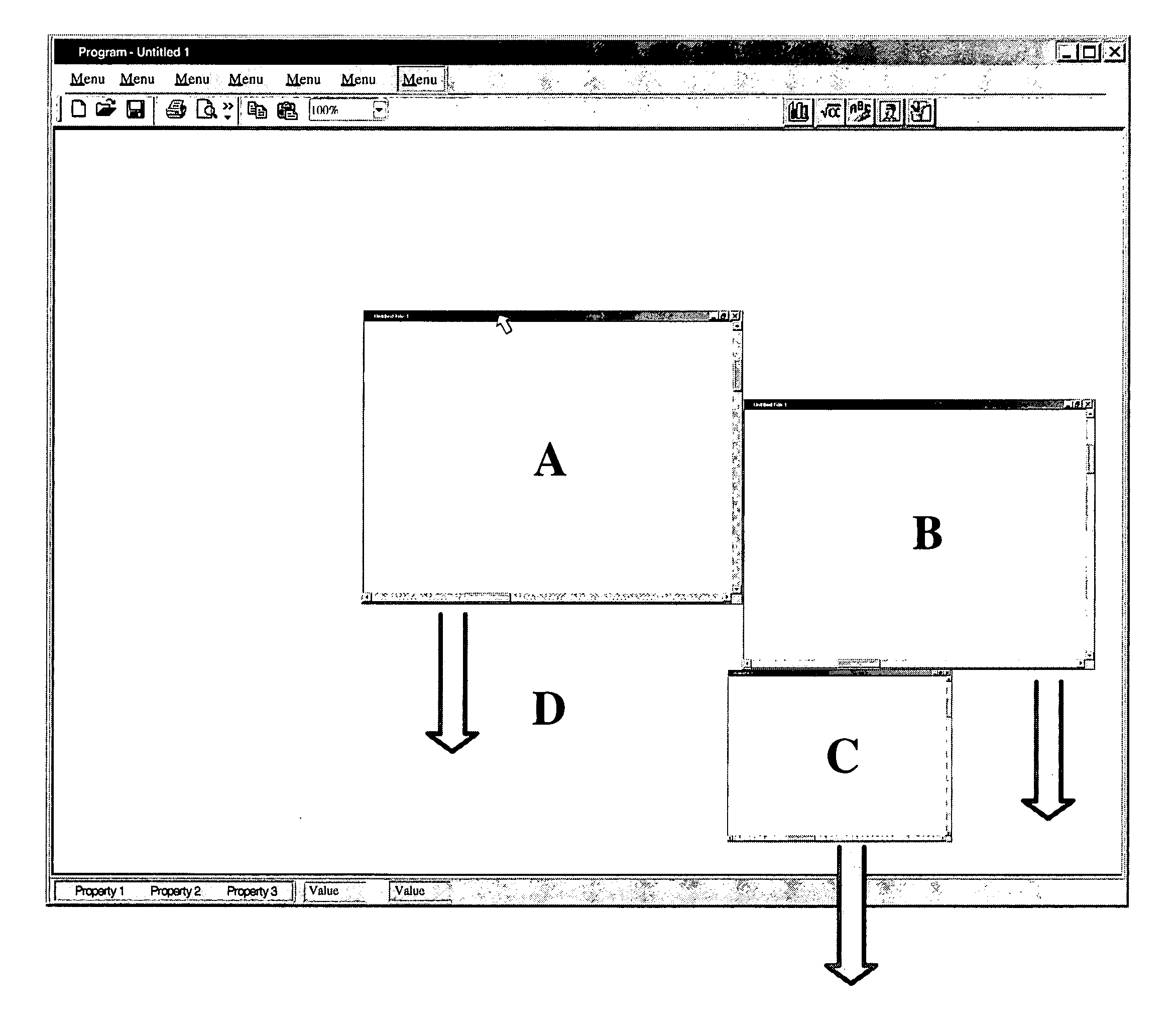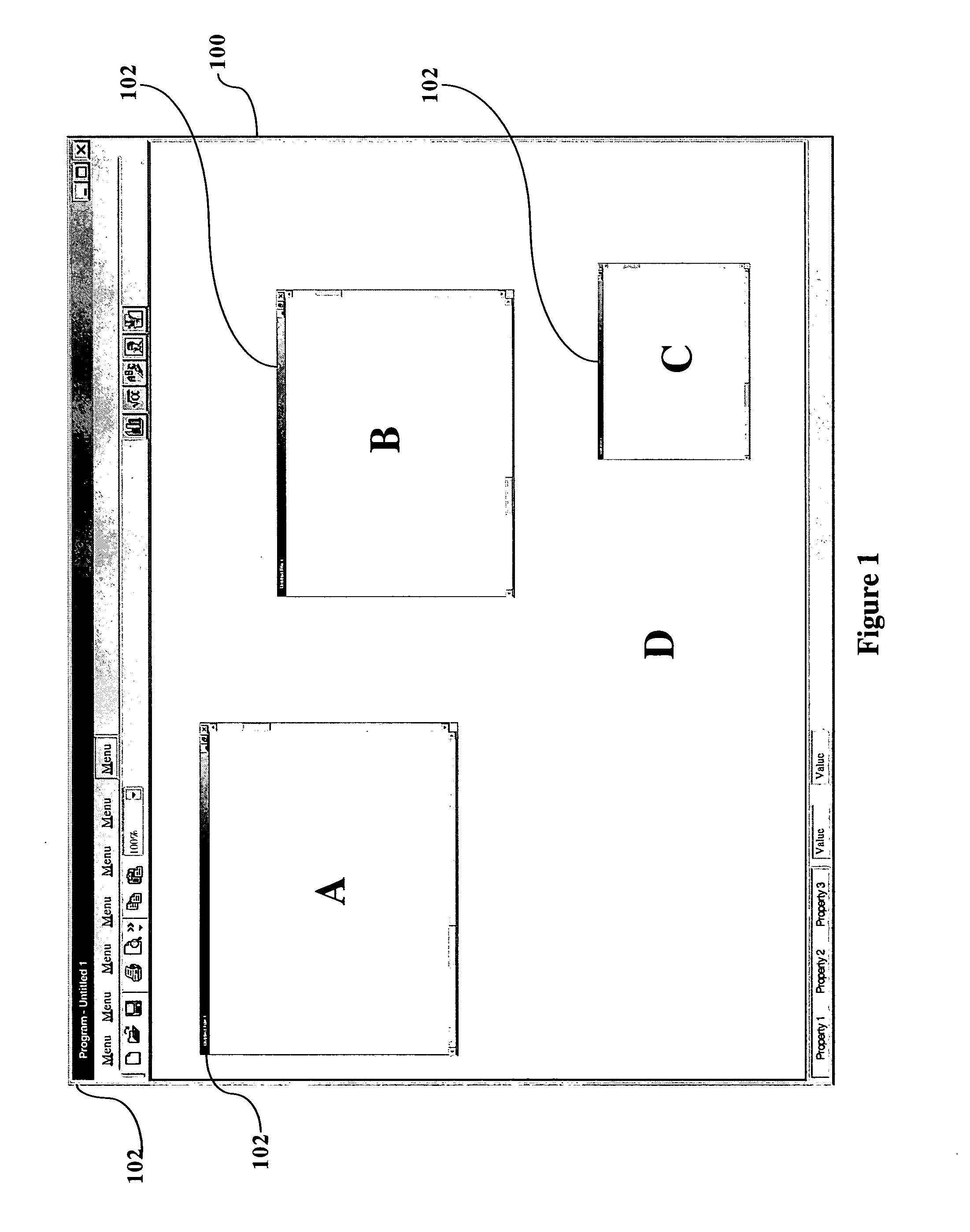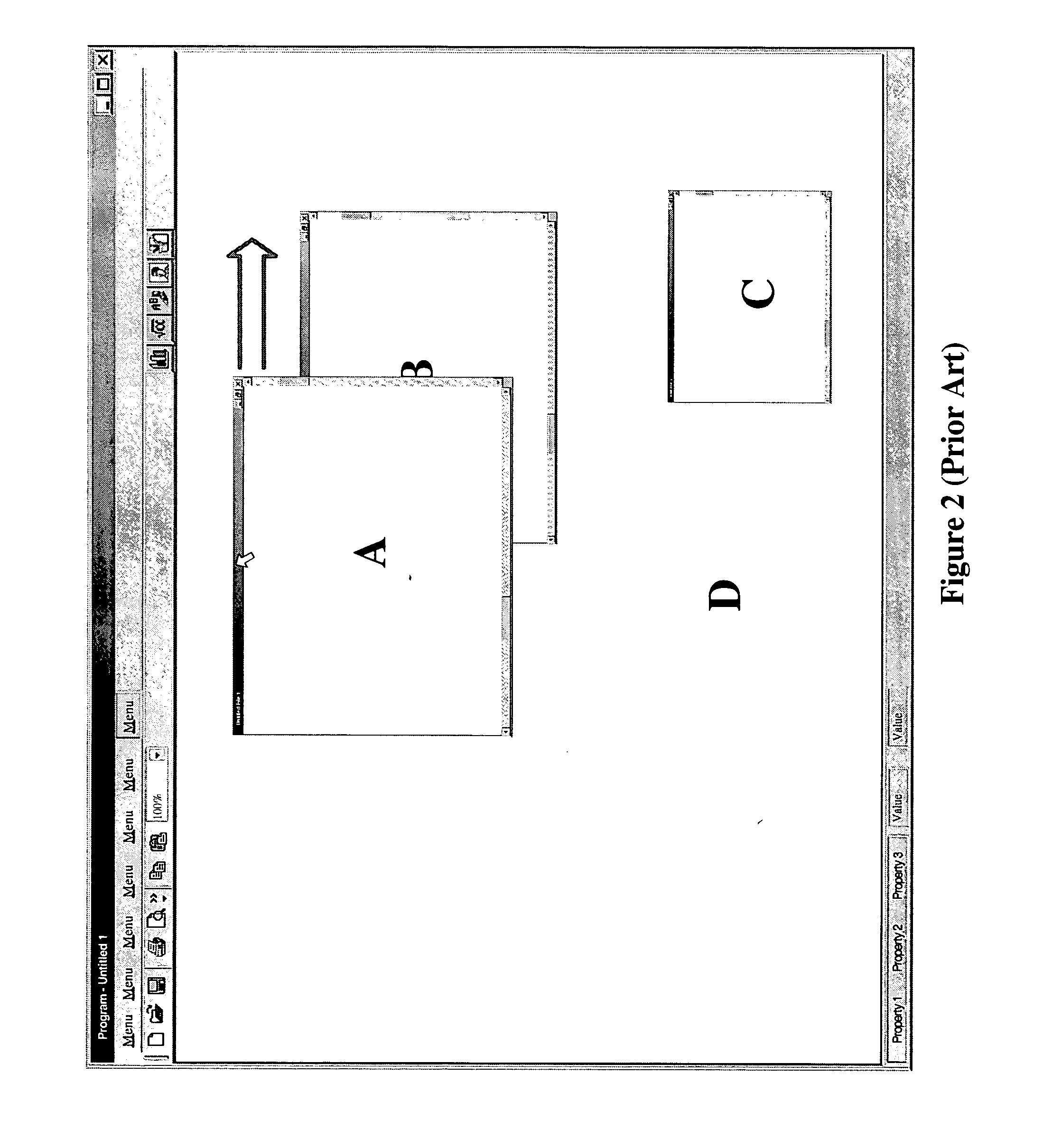Non-overlapping graphical user interface workspace
a workspace and graphical technology, applied in the field of personal computer systems, can solve problems such as and achieve the effect of increasing the size of the object uni
- Summary
- Abstract
- Description
- Claims
- Application Information
AI Technical Summary
Benefits of technology
Problems solved by technology
Method used
Image
Examples
Embodiment Construction
[0021] To better understand the present invention, it is helpful to observe the operation of the prior art. All of the examples below illustrate the present invention and the prior art in an environment wherein the objects displayed on the desktop are window objects. However, it is understood that the present invention is not limited to window objects and can function with any objects, including desktop icons; graphical objects in modeling tools, and the like.
[0022]FIGS. 1 and 2 illustrate the operation, and deficiencies, of the prior art described above. FIG. 1 shows a typical desktop D, displayed within a GUI 100. Situated on the desktop are windows A, B, and C. Each window has a title bar 102 (as does desktop D), which is simply a graphical portion of the window where, typically, a title will be displayed, identifying the contents of the window.
[0023] The desktop D is a standard, overlapping desktop, where each window can overlap other windows. If a user wishes to move window A...
PUM
 Login to View More
Login to View More Abstract
Description
Claims
Application Information
 Login to View More
Login to View More - R&D
- Intellectual Property
- Life Sciences
- Materials
- Tech Scout
- Unparalleled Data Quality
- Higher Quality Content
- 60% Fewer Hallucinations
Browse by: Latest US Patents, China's latest patents, Technical Efficacy Thesaurus, Application Domain, Technology Topic, Popular Technical Reports.
© 2025 PatSnap. All rights reserved.Legal|Privacy policy|Modern Slavery Act Transparency Statement|Sitemap|About US| Contact US: help@patsnap.com



